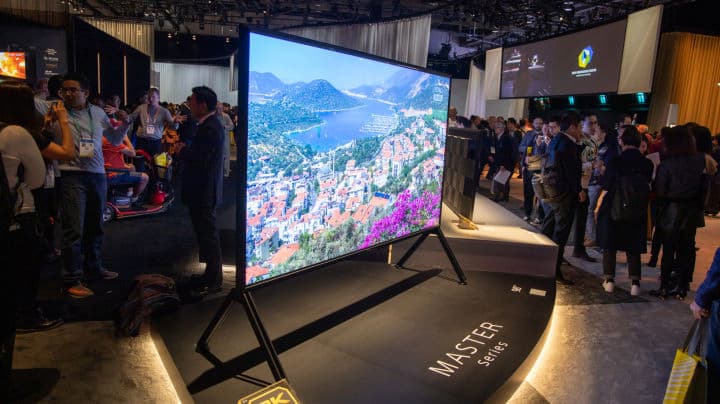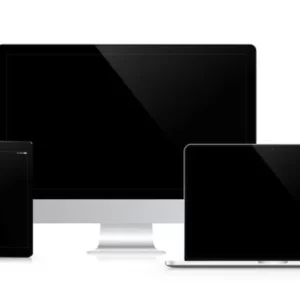What is the best size tv for gaming?
Most experts agree that a 43-55 inch wide TV is the ideal size for gaming television. Based on your TV’s resolution, the amount of available space, and other elements, you can choose the appropriate gaming TV size. A 32-inch TV is preferable for lower resolution 1920×1080 content. Additionally, having enough room is important for maintaining the right distance from the TV.
Numerous important factors will influence which size you should choose for your game television. Before settling on the ideal gaming TV size, you must carefully weigh each of these factors. The main elements that affect your TV’s size are listed below for your convenience.
Please keep reading to learn more details about the ideal television size for gaming.
Table of Contents
Best Size TV For Gaming
32-inch TVs
A TV should not be smaller than 32 inches if it is intended for a small room. Nowadays, anything that is smaller than 32 inches is regarded as vintage and out of date. In this case, a 32-inch TV is an option if you are limited by space. 4-6 feet is the recommended viewing distance for 32-inch TVs. You can however get a 4K TV and sit as close as three feet away.
43-inch TVs
For a smaller living room or bedroom, this is just about ideal in size. If you’ve tried to use a 32-inch set in the same space, you’ll notice right away that it’s big enough, but not so big that it starts to dominate other furniture or any paintings you might have hung. There is plenty of space to set up a sofa directly across from it because the minimum viewing distance for 1080p and 4K is approximately 1.8 and 1.3 meters, respectively. Modern TVs aren’t nearly as heavy as they were ten years ago thanks to the death of plasma, but sets in this size range are especially light and manageable. If you’re purchasing a soundbar to go with your TV, make sure it doesn’t stand higher than the stand you’ll be mounting the TV on or it will protrude into the picture. A high-quality 4K TV, like the Sony XBR 800 series, that offers clarity and color on a smaller screen is probably the best option for anyone looking at 43-inch models.
55-inch TVs
The extra space provided by a step up in diagonal makes a noticeable difference in the height and width of the TV, but it is still only categorized as a “medium-sized” set. For the majority of contemporary living rooms, this is ideal. A larger TV requires more space to be placed in, in addition to the obvious cost increase. Make sure your wall mount can support the weight of the larger TV or that the supplied stand’s feet are close enough together to fit on the cabinet you’re placing it on. The viewing distances are 2.1m at 1080p and 1.4m at 4k, which is a noticeable improvement over the previous size. The majority of contemporary 4K sets are suitable for screens this size, but if you want your games and movies to look their best, we’d probably suggest a budget QLED TV like the Samsung Q70R.
65-inch TVs
We are now in a conversation. A 1080p TV of this size is available, but why would you want one? It’s worth the extra money to have a 4K television that will overwhelm you with color and detail. A TV this size will require you to sit farther away from it than any other that has come before, so it isn’t really appropriate for a small room. It can get tedious to turn your head to the bottom left to check your radar and then to the top corner to check how much ammo you have left in a PS4 game when playing on a 75-inch rear-projection TV with a viewing sweet spot in the adjacent room. With one of these big boys, you should sit at least 2.4 meters away from it in 1080p and 1.6 meters away in 4K, which is what you should be getting. Opt for an LG OLED E-series TV if you want to really showcase 4K games on a screen of this size.
75-inch TVs
If you have the money, you can purchase an 8K resolution set at this size, which requires a completely different set of calculations to determine where your gaming chair should be positioned for the best experience. 4K requires you to sit 3.2m away from the screen, which is a large distance, so make sure you have enough space in your home.

Considerations Before Choosing The Best TV Size For Gaming
Viewing Distance
The viewing distance is crucial when choosing a TV size for gaming and other purposes. The size of the screen is among the most important factors to take into account when choosing the best-sized TV for gaming.
Approximately 1.5 to 2.5 times the television’s diagonal screen length is the recommended viewing distance for video games. The best gaming experience, for instance, is had when seated 4–6 feet away from a 32-inch monitor.
Because certain screen resolutions, like 1080p and 4K, do not improve image quality at longer distances as the distance increases, you should consider the viewing distance.
In order to avoid seeing individual pixels, which would produce a blocky and distorted image, the ideal sitting distance from your screen is sufficient.
Gaming Style
Competitive gaming and casual gaming are the two ways that we can categorize gaming styles. One is heavily reliant on performance, while the other is less concerned with performance and more concerned with aesthetics and user experience.
Competitive Gaming
Many of us prefer competitive gaming, whether we use a gaming PC or a gaming console, and we should have a TV that can accommodate this. Performance standards for a gaming console or PC are necessary for competitive gaming. Your TV should have characteristics like a fast refresh rate, low input lag, and adaptive sync option in order to support your capable gaming device.
The size of your TV will also depend on the gaming console you own. With gaming consoles, you can choose a TV size between 32 and 55 inches, and up to 32 inches for PC gaming. In order to get the most out of competitive gaming, make sure your viewing distance is appropriate and your viewing angle is optimal.
Casual Gaming
More emphasis is placed on visual experience than performance in casual gaming. To provide you with better visual quality, your TV ought to have features like 4K compatibility, HDR, and adaptive sync options.
Your gaming system will also affect the TV’s size. For gaming on a computer, you can use a TV up to 32 inches in size and between 40 and 65+ inches for gaming consoles. To get the most out of your gaming experience, make sure your viewing distance is correct and your viewing angle is optimal.
In order for you to know what viewing distance and viewing angle are best for you and suit your preferences, we will discuss viewing distance and viewing angle in the article that follows.
Gaming Type
Console
Your TV size requirements for PlayStation, Xbox, or Nintendo will be very different from those for PC gaming.
Games that support 4K screen resolutions can be played on modern consoles like the PS5 and Xbox Series X/S, but you’ll need a TV between 40 and 60 inches in size to do so.
The largest screen resolution that older consoles can support determines the TV size.
For running games with high graphic demands, older consoles may upscale from a lower rendering resolution, which has a maximum screen resolution of 1080p.
A TV between 32 and 40 inches in size is required for older game systems.
Gaming On A Computer
Anyone who enjoys playing PC games will tell you that a gaming monitor is much better than a television. This is because your eyes are only 3–4 feet away from your computer screen.
Your screen shouldn’t be bigger than 32 inches when viewed from this close a distance. Another benefit is that most computer monitors come equipped with all the features needed for frantic gaming that are normally reserved for TVs with dedicated gaming features.
Look for features like HDR, a quicker response time, a higher frame rate, less input lag, and adaptive sync options if you play PC games and need a gaming TV for some other reason to make sure your gaming is flawless.
Angular Resolution
Full HD resolutions of 1080p allowed for a wider field of view, but 4k further enhanced that potential. Even when playing a high-definition 1080p HD movie, sitting close to a TV with a 1080p screen resolution may cause it to seem as though you are watching it through a screen door.
As you get farther away from the TV, the graphic density will increase, giving you a better picture. Angular resolution is the quantity of pixels per angle.
As you move farther away, the angular resolution will get better. This issue is much less likely to occur on 4k TVs because of their high pixel density. In order for the TV’s display to be noticeably annoying, you will need to be seated fairly close to one that is reasonably large.
Viewing Angle
It can be challenging to select the ideal viewing angle for your TV and gaming experiences. Your TV’s viewing angle can be changed in one of two ways. The TV provides one viewing angle, and the seat provides the other.
The viewing angle from the TV will only affect the color composition, whereas the viewing angle from the seating position determines the field of view of the screen, so it will have no more of an effect on the gaming experience than the viewing angle from the seating position.
The range of 20 to 50 degrees is thought to be the ideal viewing angle for most TV applications. 40 degrees of viewing angle is recommended for the cinematic experience, while 30 degrees is thought to be a good angle for mixed usage.
The 40-degree viewing angle can therefore be used to achieve the fully immersive viewing experience that gamers desire when playing games, which is also better for the cinematic experience.
The above image illustrates the recommended viewing angles by THX and SMPTE from a distance of 9 feet apart: 30 degrees and 40 degrees, respectively. Make sure to take this into account, select your ideal viewing angle, and then return to the viewing distance chart, which also includes the viewing angle positions, which are displayed as white dotted lines alongside viewing distance and TV size.
Screen Resolutions
What resolution is best for gaming, then? The ideal resolution for gaming is 1440p because it offers the best performance and aesthetics. 720p is the optimum resolution for streaming or playing on an older system, although 1080p is becoming increasingly popular.
2160p is the best resolution for gaming with genuinely amazing visuals, but it necessitates high-end graphics cards.
The size of the TV you use for gaming becomes extremely important when you’re using a gaming console that supports 4K screen resolutions. Screen resolution is now much more crucial in modern gaming because it impacts the overall gaming experience.
Screen resolution is much more crucial in contemporary gaming because it impacts the overall gaming experience.
The following screen resolutions are compatible with modern TVs. The majority of these screen resolutions are compatible with gaming-specific televisions. Depending on your gaming preferences and style, you should choose the right screen resolution.
720p – HD
If players want the best performance and streaming, they should choose the minimum resolution for the games. Finding the ideal TV size for gaming is now much simpler thanks to the 720p screen resolution because the pixels are much more visible than on a screen that is 27 inches in size. To get the best visual quality, make sure your TV or monitor is no larger than 27 inches.
1080p – Full HD
The majority of older gaming console generations, as well as the majority of gamers, use the full HD 1080p screen resolution. However, you’ll discover that full HD is the bare minimum screen resolution that a 32-inch TV can display with good visual quality.
Therefore, you should have a TV with a size between 27 and 32 inches if you have older console generations or want to ensure that your games run quickly without focusing on the visual quality. On older gaming console generations, you’ll get better visual quality with these TV sizes.
1440p – Quad HD
The best screen resolution for gaming that we advise is 1440p – Quad HD because it provides you with the best performance and visual quality. Although the 1440p screen resolution can be supported by contemporary gaming PCs and consoles without significantly affecting framerate.
The Xbox Series S is the less powerful Xbox generation, offering a 120 frame rate at 1440p screen resolution as opposed to the Xbox Series X, which has a higher processing power and can play games at 4K with up to 120 frame rates.
The recommended TV size for gaming with a 1440p / Quad HD screen resolution is between 32 and 40 inches. Make sure to check out the demo TV’s visual quality because you might decide to purchase a 4K TV that can support all current games in the end.
2160p – Ultra HD / 4K
The majority of game developers aim to produce new games with a 4K ultra HD resolution. Given that the newest gaming consoles and PC hardware can run it at a respectable frame rate of 60, and occasionally even 120.
Given that most gamers and game developers will use 4K as their preferred resolution for gaming, your TV should be 4K compatible in order to run high definition graphics and other features like low response time, input lag, high refresh rate, and adaptive sync option without any issues.
Despite the fact that for the majority of us, 4K seems like a fantastic option, there is one drawback to that screen resolution. The viewing distance will be shortened to actually be able to notice the differences from a certain viewing distance because 4K – 2160p will have more pixels than the lower screen resolution (4 times that of 1080p).
4320p – 8K
The next-generation screen resolution that can be found in gaming consoles or PCs with a specific technology is 4320p 8K. Although 8K gaming is not very common these days, it won’t be completely available until a good price point is reached for the technology that can render the pixels with excellent performance.
If you’re still on the fence about getting an 8K TV (yes, there are 8K TVs on the market), the suggested range for screen size is 55 to 85 inches. Aside from those mentioned above, you should also take into account things like viewing distance, viewing angle, angular resolution, and their effects.
Room Size
Yes, the size of the room will help you choose the proper TV size. Taking this into account will also assist you in selecting the ideal TV size that will perfectly complement the proportions of the room’s size.
You can take into account other factors that are far more important to ensure you have the right size TV for gaming if you are less concerned about the TV and area proportions and are more concerned with the gaming experience.
Pricing
The only aspect that will be taken into account based on your budget is the pricing. The only issue is whether the larger size or particular features are truly worth the price they command.
Instead of just using the current price point, we will use the pricing as a benchmark for all the features that it should include. Prior to choosing the ideal TV size for gaming or even the associated budget, be sure to take into account the following factors.
Size
In addition to being dependent on the type of TV panel, the price will increase as the size does. A bigger TV will cost more money, and the majority of them are 4K compatible, so keep that in mind as you make it bigger.
4K
4K Your TV budget will be significantly affected by your decision regarding 4K or not. Compared to TVs with lower screen resolutions, 4K compatible TVs are more expensive. Given that the majority of contemporary games are released in 4K and you may want to make your gaming setup future-proof, we strongly advise making the investment in a 4K TV.
Response Time
Most TVs typically have response times above 10ms, so most PC gamers should choose gaming monitors with response times of around 1ms. If you enjoy competitive gaming, you should take this feature into account when buying a gaming TV. There are TVs that are designed with a fast response time with the gaming market in mind.
Refresh Rate
The majority of TVs have a refresh rate of around 60Hz, so if you enjoy competitive gaming, look for a TV with a refresh rate of at least 120Hz.
There are TVs that are designed with a high refresh rate specifically with the needs of gamers in mind. If you are going with 4K and want to experience the high graphics smoothly
Adaptive sync option
You must identify the TV that supports adaptive sync, such as AMD FreeSync or Nvidia G-Sync. The cost of this adaptive sync option will apply.
If your TV doesn’t support adaptive sync, its visual performance will be significantly worse than it should be for gaming.

Best TV Size For Console Gaming
You should take into account a TV size between 40 and 60 inches for more recent gaming consoles like the PS5 and Xbox Series X, which support 4K and can provide you with up to 120 frames per second, while you should take into account a TV size between 32 and 40 inches for PS4 and Xbox One, which support 1080p screen resolution.
Recommended: Best Size Tv For Bedroom
FAQs
What Size TV Would Be Ideal For Gaming Competitions?
A TV with a screen size of between 32 and 40 inches and a viewing distance of 4-5 feet should be the best choice for competitive gaming. Since anything larger than 40 inches with 1080p would have poor picture quality, choosing a TV size is largely a matter of taste and viewing distance.
What TV Size Is Ideal For Playing Ps5 Games?
The newest gaming consoles, PS5 and Xbox Series X, support 4K resolution and up to 120 frames per second and should be played on a TV between 40 and 60 inches, while PS4 and Xbox One only support 1080p and should be played on a TV between 32 and 40 inches.
Should I Use a TV for PC Gaming?
Traditionally, we would have advised you to connect to a monitor for the best results, but choosing a TV as your main display has some advantages as well. A gaming TV will be noticeably brighter than a typical gaming monitor, especially if it has a 120Hz refresh rate and high-quality HDR.
The size is another consideration; you’ll probably get a panel that is significantly larger than almost any of the available traditional gaming monitors. You can now enjoy technologies like FreeSync or G-Sync on your preferred big screen panel because many high-end TVs also come with game-focused features.
There is now essentially no compromising. Well, aside from the pixel pitch on such enormous screens. However, it is less of a problem if you are gaming on the couch. You can play games at 120Hz and in 4K on many TVs with an HDMI 2.1 connection and a modern AMD or Nvidia GPU.
Do I Need a TV With HDMI 2.1 for PC Gaming?
HDMI 2.1 is a necessity if you want to play video games at 120 frames per second in 4K. And that holds true whether you’re referring to PC gaming or a console like the PlayStation 5 or Xbox Series X. However, if you’re only using a 4K TV with a maximum 60Hz refresh rate, a regular HDMI 2.0 connection will work just fine.
It’s important to note that only the most recent AMD and Nvidia graphics cards have HDMI 2.1 connectors.
Is OLED Or QLED Better for Gaming?
Both of these panel technologies aim to raise overall picture quality in a forward-thinking manner. While OLED can provide better viewing angles, better contrast, and especially better blacks, QLED can provide better brightness and support for larger screen sizes. However, because it frequently depends on the specific implementation, it is not as simple to declare one to be unquestionably superior to the other.
Conclusion
The article concentrated on the ideal TV size for video games.
The parameters we talked about earlier determine the ideal screen size. To get the best TV size, take into account your living area’s size in addition to the previously mentioned elements. Choose one of the best gaming TV options after giving everything a thorough thought. You will have the best experience possible using these TVs.
I appreciate your reading.





